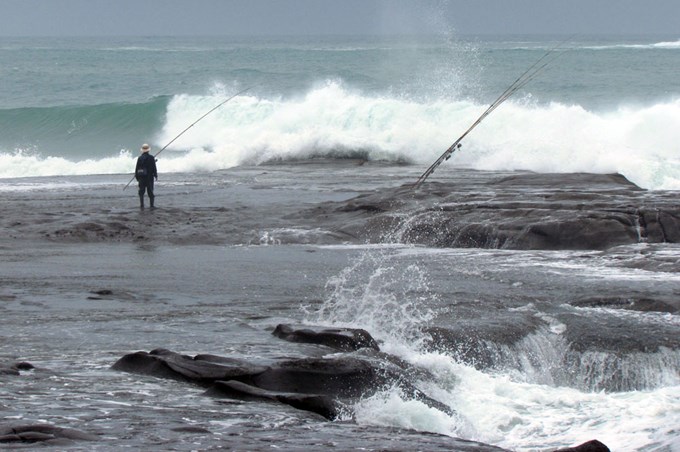Water safety experts are concerned at evidence of a dramatic decline in lifejacket use among rock fishers on Auckland’s notorious west coast.
The finding comes from a survey of west coast rock fishers by Auckland University researcher Dr Kevin Moran, which highlights a more than 30 per cent drop in lifejacket use.
While the numbers of fishers drowning off rocks has declined in recent years, the survey results show that several risky rock-fishing behaviours are creeping back in, say WaterSafe Auckland Chief Executive Jonathon Webber and Surf Life Saving Northern Region Operations Manager Adam Wooler, whose organisations are part of a joint taskforce with Auckland Council to improve safety at rock-fishing sites.
“What stood out alarmingly was a dramatic decline in lifejacket use,” says Webber.
“Our joint campaign to reduce drowning off rocks has been effective, but there is a real risk that the fishers will become complacent – and the survey tells us that’s happening.”
Summer surge in numbers
Webber says the arrival of summer and the holiday break sees a surge in numbers fishing off rocks and the task force will be carrying out a campaign of activities over summer to raise awareness about the risks involved. The campaign will include workshops, public service notices and visits to the sites to educate those fishing on the dangers and what they need to do to stay safe.
“We are appealing to the families of the mainly men who fish off the rocks to urge their fathers, husbands and sons to act responsibly, especially around wearing a lifejacket, so they get home safely at the end of the day,” says Webber.
'Blokes feel they're bulletproof'
“In the absence of incidents, the blokes tend to feel they’re bulletproof but it just takes one rogue wave to dislodge a person, and wearing a lifejacket may mean the difference between life and death – as the sad Kaipara incident last month showed. Our west coast seas remain dangerous and unpredictable whatever the time of year.”
The annual survey, the 11th to be carried out by Moran’s team, interviewed 147 rock-fishers on their thoughts and habits around rock-fishing risks and precautions. The 2016 survey showed 24 per cent of those interviewed didn’t 'often' or “'always' use a lifejacket on the rocks, compared with 40 per cent in the 2015 survey.
Other findings
Other concerning findings were that fewer perceived there to be a drowning risk on the rocks (22 per cent vs 77 rock fishers in 2015) or that drowning was 'a constant threat' (14 per cent vs 68 per cent in 2015), while there was still an alarming prevalence of the use of gumboots and a habit of rock-fishers turning their backs to the sea or going down to the rocks’ edge to retrieve snagged lines. There was also a 'bullish' sense of rock-fishers own ability to survive being swept off the rocks, says Webber.
The rock-fishing locations involved were at Muriwai (Maori Bay, Collins Bay, Pillow Lava Bay), Bethells Beach (O’Neill Beach, Ding Bay), Whites Beach, Ninepin (Anawhata and Whatipu) and Karekare.
Moran’s survey showed as in previous that the biggest percentage of those fishing off rocks are Asian (54 per cent), mainly Chinese, and male (91 per cent). Campaigns in the past have been multi-lingual and this year’s will also feature strong outreach to the Asian community, as well as Pacific Island communities.
Read Dr Moran’s report into the West Coast Rock-Based Fishers Safety Project 2016.


